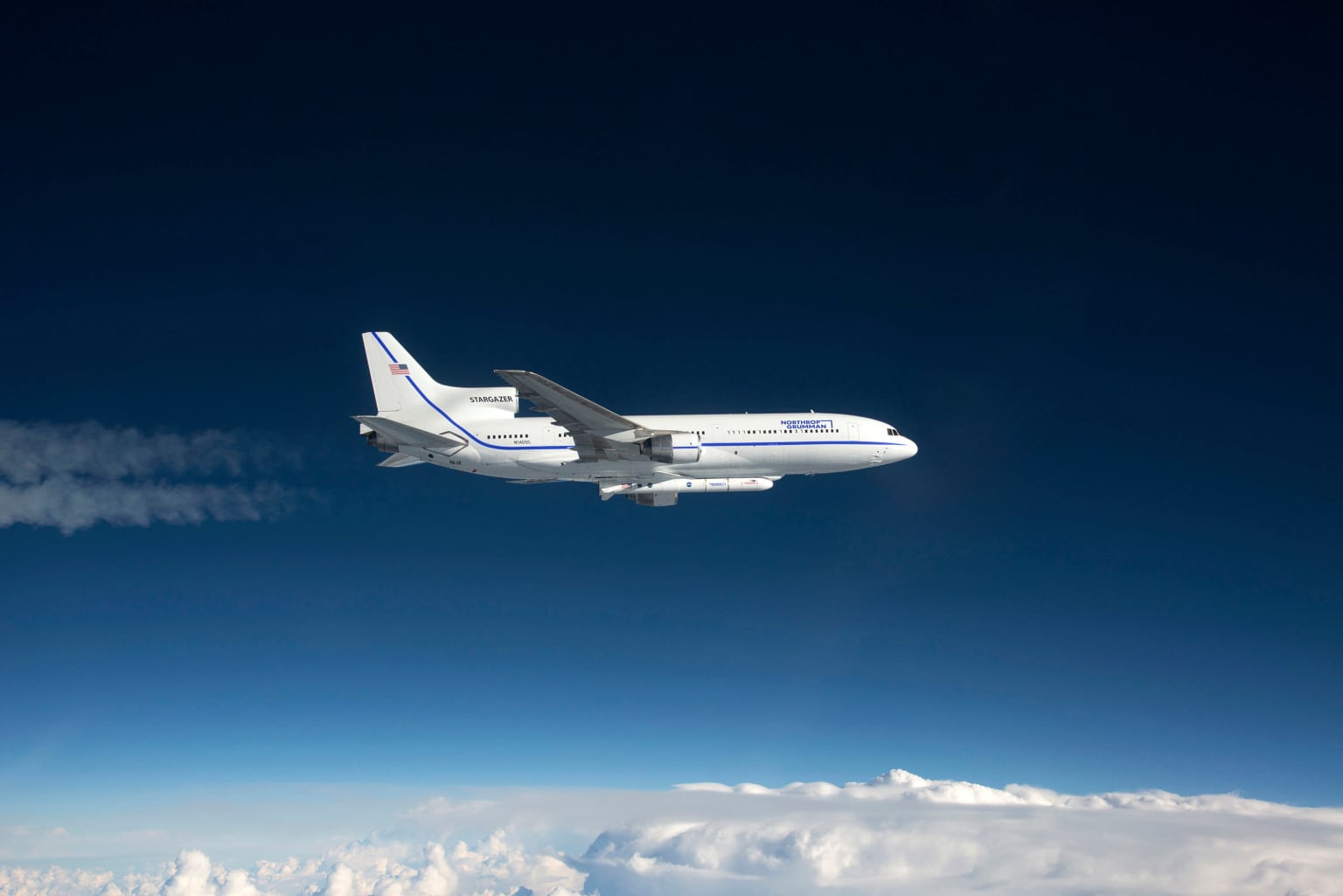WASHINGTON — The U.S. Space Force launched an experimental space situational awareness satellite June 13 from a rocket aboard a plane in flight — readying the payload for launch in record time.
Unlike most rockets that launch vertically off the ground, the Northrop Grumman Pegasus XL launches satellites into low Earth orbit from a modified Stargazer L-1011 aircraft in midair. After taking off from Vandenberg Space Force Base in California, the Stargazer rose to about 40,000 feet above the Pacific Ocean, where the Pegasus rocket ignited its solid propulsion first stage to accelerate into orbit.
The Air Force Research Laboratory and Space Dynamics Laboratory built and operates the payload: a Tactically Responsive Launch-2 satellite.
While details about the technology demonstration payload are slim, the mission represents another step in the military’s efforts to develop or procure a rapid launch system to put satellites on orbit and deliver capabilities to the war fighter in a tactical timeframe. For example, if an enemy force took out a surveillance satellite that U.S. forces on the battlefield were depending on, commanders on the ground could theoretically order a replacement satellite from the Space Force.
“When I challenged the Space and Missile Systems Center about a year ago to demonstrate a responsive space capability, they accepted and delivered! The team presented an integrated Space Domain Awareness satellite ready for launch in record time; what normally would have required two to five years, took 11 months,” Chief of Space Operations Gen. Jay Raymond said in a statement. “Agile, responsive capability development, combined with our ability to rapidly launch and insert capabilities into space where we want, when we want, will deny our competitors the perceived benefits of beginning a conflict in, or extending a conflict to, space.”
With the payload ready, SMC entered a six-month standby period. A notice to launch was executed less than two months later and a contract was awarded to Northrop Grumman. According to Raymond, SMC and Northrop Grumman were then able to execute a “21-day call up” to pull the payload, integrate it with the rocket and aircraft, and place it in orbit. The entire event took place in less than four months from contract award.
“This Pegasus launch was a clear demonstration of our team’s ability to provide rapid and responsive operational needs,” said Rich Straka, vice president of launch vehicles at Northrop Grumman in a statement. “Our team was able to execute the design, integration and testing of the TacRL-2 launch vehicle in less than four months from contract award.”
The mission was led by SMC’s Small Launch and Targets Division in partnership with the new Space Safari Program Office, which was set up recently to rapidly integrate commercial off-the-shelf technology and respond to pressing needs.
The Pentagon has long seen a need to develop such a responsive launch capability. In 2018, the Defense Advanced Research Projects Agency kicked off the DARPA Launch Challenge to find launch providers able to supply launch services within days of a request. And while competitors were able to show that they could move quickly, none were able to successfully complete a launch within the short timeframe. The final company in the competition — Astra Space — had to scrub its launch on the final day of the challenge due to inclement weather.
The DARPA Launch Challenge is over, but the effort to find a commercial rapid launch capability has continued through the Defense Innovation Unit, which is issuing contracts for SMC’s Space Test Program as part of the Rapid Agile Launch Initiative. Contracts have been awarded to Relativity Space, Rocket Lab and Vox Space.
The Tactically Responsive Launch-2 mission will be used to inform future Tactically Responsive Launch missions slated to launch in 2022 and 2023, according to the Space Force. The service sees the missions as key to developing the rapid launch capability needed to deliver tactical space capabilities to combatant commands.
Nathan Strout covers space, unmanned and intelligence systems for C4ISRNET.








